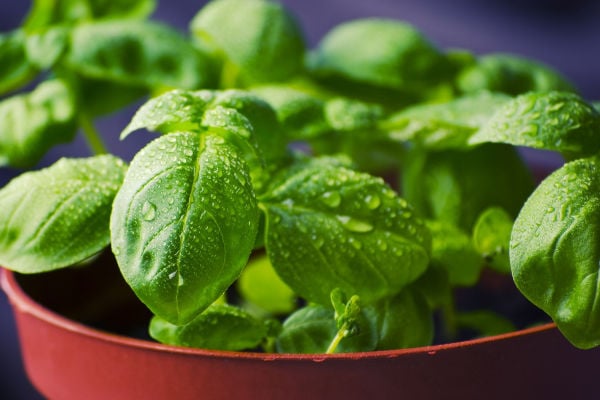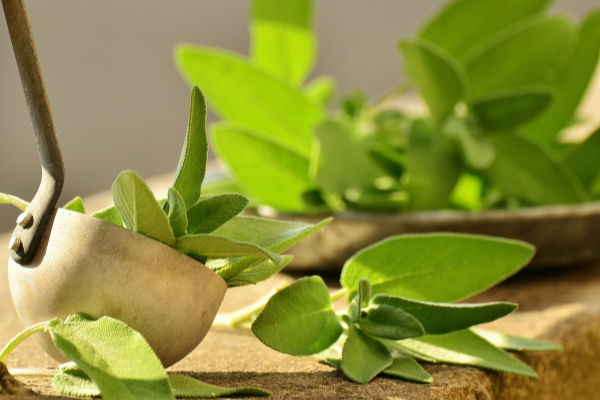Oregano is an everyday herb that is commonly associated with Italian and Greek cooking. Pizza, pasta sauce, and vinaigrette all taste delicious with the addition of this ingredient. It offers a slightly peppery, zesty bite to food that is unique and hard to replace.
If you’re looking for an oregano substitute, then we have a range of replacements. They are likely to be in your kitchen cupboard, so keep reading to discover your best backup options.
Table of Contents
Recommended oregano substitutes
Got no fresh oregano? Your best option is to use dried oregano as you’ll get the same flavor profile. Dried herbs offer a stronger punch of flavor than you can get from the fresh variety, so adjust the quantities accordingly. If a recipe calls for one tablespoon of fresh herb, use one teaspoon of dried. If possible, taste test and add more if necessary.
But what if you don’t have any oregano, dried or fresh, in the kitchen? Here are four more options that have similar flavors. They’ll allow you to finish that recipe without taking a time-wasting trip to the store.
1. Marjoram

Oregano is also known as wild marjoram.
This alternative seemed like a no-brainer. Marjoram and oregano are both from the mint family, and they also look similar in appearance. Oregano is often referred to as wild marjoram, but is the flavor consistent? They both share a spicy, bitter taste that has great cut-through in pizza, pasta sauce, and also in taco seasoning. But, oregano has a stronger, sharper flavor, so you’ll want to increase the quantity of marjoram used.
How to use:
Increase the oregano quantity by 50%. For example, increase one teaspoon of oregano to 1 ½ teaspoons of marjoram. For slow cooking, add the marjoram towards the end of the cook as it is a delicate herb that doesn’t hold up well over prolonged heat.
2. Thyme

Thyme and oregano are both part of the mint family.
Thyme is a versatile herb that is a suitable addition to dressings, vegetables, chicken, and any tomato-based dish. It is also a member of the mint family and is an excellent oregano substitute for most recipes. Thyme has a sweeter undertone and is much less aromatic, but that shouldn’t be a deal-breaker.
Quick tip:
If you grow your own thyme, sometimes the plant can produce more than you can use. Be sure to check out our guide to herb preservation which in an info-packed resource to help you get started.
How to use:
Use equal quantities of thyme as you would oregano. Be sure to source English or French thyme for the best flavor results.
3. Basil

Basil has a strong, pungent flavor.
If you need a substitute for oregano, and you don’t have marjoram or thyme, then basil is your best option. It is ideal for use in meat dishes, pasta sauces as well as a pizza topping. Mediterranean dishes also benefit from basil’s strong, pungent flavor with a sweet, mild anise undertone.
How to use
We recommend reducing the ratio of basil as it packs a lot of flavor. Use between ½ to ¾ of the amount of oregano. That is, unless you are a big basil lover, in which case you can substitute equal quantities.
4. Sage

Sage is ideal in vegetable, poultry and meat dishes.
If you’re in a pinch, sage is a useful seasoning that’s bitter with the flavor and aroma of pine. There’s also a citrusy taste, which results in an herb that isn’t a close match. In saying that, sage works in many dishes that call for oregano. Poultry, meat, vegetables, and soup all combine well with sage.
How to use
Use fresh sage leaves if you can, as the flavor is more pronounced. Add the same quantities as the amount of oregano recommended in the recipe.
Are oregano and Italian seasoning the same thing?
Italian seasoning is a mix of rosemary, thyme, oregano, and basil, which is popular in many Italian dishes. Oregano is a single herb that can be used in cooking dried or fresh.
Suggested reading:
What does fennel taste like?
Parsley vs cilantro - what's the difference?
Fenugreek substitutes - 5 options.
Final words
There is a range of common herbs that you can use as a suitable substitution for oregano. Your best option is to swap dried for fresh, or the other way round. This will provide the closest backup flavor. Marjoram, thyme, basil, and sage are also suitable choices. Although your final meal won’t be perfect, it will still taste good, and won’t have an awkward, “out of place” taste.
When substituting herbs or spices, always add them conservatively to start. You can always add more if required, but removing too much flavor isn’t as easy.
If you need a Mexican oregano substitute, then the above suggestions will work for this herb also. You can use dried verbena or Mediterranean oregano as a backup if necessary.
Finally, if you enjoy fresh oregano, you may want to consider growing your own at home? They are a simple plant to grow inside. Add some tarragon and savory to your garden, and you’ll be set for next time.
Do you have a better replacement that isn't on the list? Let us know in the comments below.


Leave a Reply